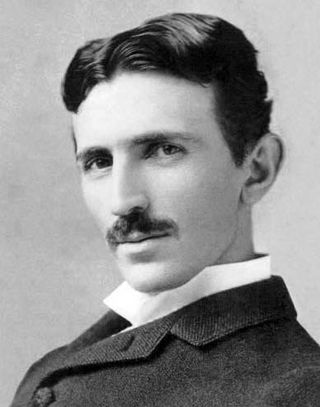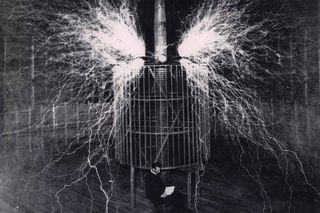Nikola Tesla: Biography, Inventions & Quotes

Nikola Tesla is often called one of history’s most important inventors, one whose discoveries in the field of electricity were way ahead of his time and continue to influence technology today. Despite his accomplishments, however, Tesla died penniless and without the accolades that would he would ultimately earn over a century later.
The “genius who lit the world” is now commemorated with an electrical unit called the Tesla, has a place in the inventor’s hall of fame, streets, statues, and a prestigious engineer’s award in his name, but in life he wasn’t always so successful.
Brilliant scientist, terrible businessman
Nikola Tesla was born in 1856 in a town called Smiljan, today part of Croatia but then located within the borders of the Austro-Hungarian Empire. His father was a priest and his mother, despite not having any formal education, tinkered in machinery and was known for having a spectacular memory.
Tesla’s career as an inventor began early; while working at the Central Telegraph Office in Budapest, at the age of just 26, he is reported to have first sketched out the principles for a rotating magnetic field — an important idea still used in many electromechanical devices. This major achievement laid the groundwork for many of his future inventions, including the alternating current motor and ultimately led him to New York City in 1884, lured by Thomas Edison and his groundbreaking engineering factory, Edison Machine Works.
It is often said that as brilliant a scientist as Tesla was, he was an equally terrible businessman, unable (or possibly unwilling) to see the commercial value behind his ideas. Thomas Edison was both an inventor and a business mogul focused on the bottom line, and he often clashed with Tesla over methods and ideology. It was also unlikely, perhaps, that two minds so brilliant could coexist in peace for very long and, indeed, Tesla quit Edison Machine Works only a year later.
Tesla’s creativity was given free rein at the new laboratory he established, Tesla Electric Light and Manufacturing, where he experimented with early X-ray technology, electrical resonance, arc lamps and other ideas. Moves to Colorado and then back to New York coincided with other great scientific feats, including advances in turbine science, the installation of the first hydroelectric power station at Niagara Falls and, most importantly, the perfection of his alternating current system.
Through it all, the compulsive, eccentric and often sensational Tesla provided terrific sound bites for reporters, speaking frequently to the press about new, futuristic ideas up to a few years before his death, when he became a recluse. Tesla died in 1943, broke and alone in a New York City hotel room.
Tesla’s legacy has experienced a resurgence of sorts in recent years, thanks to a handful of supporters who have popularized his work in the media, in the hopes of having a Nikola Tesla science museum built on the grounds of a former laboratory on Long Island, New York.

Innumerable patents
The exact number of patents held by Tesla is disputed, as some likely remain undiscovered, historians believe. He is thought to be responsible for at least 300 inventions (many related to each other), in addition to countless unpatented ideas that he developed over the course of his career.
Alternating current
Perhaps Tesla’s most famous and important idea, alternating current (AC), was an answer to his old boss Edison’s inefficient — as Tesla put it — use of direct current (DC) in the new electric age. While DC power stations sent electricity flowing in one direction in a straight line, alternating currents change direction quickly, and could do so at a much higher voltage.
Indeed, Edison’s power lines that crisscrossed the Atlantic seaboard were short and weak due to DC, while AC was able to send electricity much farther afield. Though Thomas Edison had more resources and an established reputation, Tesla’s AC power grids eventually became the norm. Several dozen of Tesla’s patents were related to alternating current science.
The Tesla Coil
Since named for its inventor, this impressive machine transforms energy into extremely high voltage charges, creating powerful electrical fields capable of producing spectacular electrical arcs. Besides the lightning-bolt shows they can put on, Tesla Coils had very practical applications in wireless radio technology and some medical devices. Tesla experimented with his coils in the last years of the 19th century.
The true father of radio
Tesla tinkered with radio waves as early as 1892, debuting a radio wave-controlled boat in 1898 with great fanfare at an electrical exhibition at New York’s Madison Square Garden. Expanding on the technology, he patented more than a dozen ideas related to radio communication, before Italian inventor Guglielmo Marconi leapt ahead of a financially unstable Tesla and completed the first transatlantic radio transmission (a bit of Morse code, sent from England to Newfoundland) on the back of Tesla’s science. Marconi and Tesla’s battle for intellectual recognition waged for decades before the U.S. Supreme Court ultimately revoked some of Marconi’s patents in 1943, restoring Tesla as the father of radio, at least legally.
Tesla quotes
“Money does not represent such a value as men have placed upon it. All my money has been invested into experiments with which I have made new discoveries enabling mankind to have a little easier life.” — "A Visit to Nikola Tesla" by Dragislav L. Petković in Politika (April 1927)
“The scientific man does not aim at an immediate result. He does not expect that his advanced ideas will be readily taken up. His work is like that of the planter — for the future. His duty is to lay the foundation for those who are to come, and point the way. He lives and labors and hopes.” — “Radio Power Will Revolutionize the World" in Modern Mechanics and Inventions (July 1934)
“The scientists of today think deeply instead of clearly. One must be sane to think clearly, but one can think deeply and be quite insane.” — “Radio Power Will Revolutionize the World" in Modern Mechanics and Inventions (July 1934)
Further reading:
Sign up for the Live Science daily newsletter now
Get the world’s most fascinating discoveries delivered straight to your inbox.
